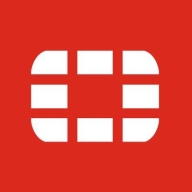


Trend Micro Integrated Data Loss Prevention and WatchGuard Firebox compete in the cybersecurity space. WatchGuard Firebox seems to have an advantage due to its robust feature set and comprehensive security solutions.
Features: Trend Micro Integrated Data Loss Prevention offers comprehensive data protection, preventing unauthorized access to sensitive information, and includes advanced micro DLP features for data monitoring. WatchGuard Firebox provides advanced threat protection, multi-layered network security, and integrates seamlessly with Active Directory for user profile management. It also supports various protocol proxies and offers a robust GUI for easy management.
Room for Improvement: Trend Micro could enhance advanced features like single sign-on and increase dashboard usability. Greater flexibility in DLP policy application would also be beneficial. WatchGuard Firebox could work on simplifying its learning curve for beginners, improve configuration documentation, and enhance integration capabilities with third-party tools.
Ease of Deployment and Customer Service: Trend Micro Integrated Data Loss Prevention is known for easy integration within existing infrastructures, featuring user-friendly interfaces and proactive customer support. WatchGuard Firebox offers flexible deployment options with strong network support and comprehensive management features, providing real-time bandwidth reports and easy-to-use dashboards.
Pricing and ROI: Trend Micro Integrated Data Loss Prevention is considered cost-effective, offering strong ROI by focusing on preventing data breaches. WatchGuard Firebox, while having a higher initial cost, provides significant value through extensive security features that mitigate broader network risks, promising comprehensive coverage despite the pricier investment.



| Company Size | Count |
|---|---|
| Small Business | 350 |
| Midsize Enterprise | 130 |
| Large Enterprise | 187 |
| Company Size | Count |
|---|---|
| Small Business | 11 |
| Midsize Enterprise | 4 |
| Large Enterprise | 3 |
| Company Size | Count |
|---|---|
| Small Business | 92 |
| Midsize Enterprise | 25 |
| Large Enterprise | 15 |
Fortinet FortiGate excels in providing integrated VPN, firewalling, and Unified Threat Management (UTM) with centralized management and high availability. It supports remote access and comprehensive threat protection, making it a preferred choice for securing networks.
Fortinet FortiGate offers a robust security platform with features such as strong intrusion prevention, application control, and web filtering. Its integration with Active Directory and SD-WAN functionality provides scalable solutions for large networks. Users appreciate its ease of use through centralized management interfaces, ensuring robust security with flexible configurations. However, FortiGate could enhance its graphical interface and technical support responsiveness, address firmware bugs and costly licensing, improve logging, integrate better with third-party tools, and strengthen scalability and memory for log storage. Complexity in configuration and the need for intuitive features are noted challenges, and there's a demand for advanced security, zero-trust capabilities, and AI integration.
What are the key features of Fortinet FortiGate?Fortinet FortiGate is widely implemented across industries like education, finance, and government. Companies use it for firewall protection, VPN, and SD-WAN capabilities, ensuring secure perimeter and data center security. It facilitates remote access management and traffic routing optimization, offering reliable security and connectivity solutions.
Now more than ever, your data is on the move—whether it’s on a laptop, flash drive, or moving across physical, virtual, and cloud infrastructures. At any point along the way, your financial data, customer information, intellectual property, or trade secrets could be lost or stolen. Securing this data is further complicated by several growing risk factors:
Rapidly evolving compliance regulations and mandates, including GDPR
Continued growth of workforce mobility
Employees using their own mobile devices and consumer apps for work
Rising frequency of advanced persistent threats (APTs) and data breach incidents
To avoid the embarrassment, reputation damage, regulatory fines, and revenue loss, today’s enterprise must be able to identify, track, and secure all confidential data from multiple points within the organisation and in the cloud without impacting employee productivity and performance. In the past, many organisations tried traditional data loss prevention (DLP) solutions but found they were too intrusive, too complex to manage, and too costly to acquire, deploy, and maintain.
WatchGuard Firebox is a high-performance firewall known for its ease of setup, offering robust security with layered protection and centralized management capabilities.
WatchGuard Firebox stands out for its intuitive management and high throughput, addressing security needs with features like VPN, web filtering, and threat detection. Its centralized control and reporting abilities, along with Active Directory integration, make it popular among varied organizations. Its user-friendly interface and ongoing updates enhance usability and reliability. However, there's a call for better cloud-based administration, scalability, and improved integration with third-party vendors.
What are the key features of WatchGuard Firebox?WatchGuard Firebox is implemented across industries to secure internet gateways and protect data in multi-site businesses. Its applications span from Unified Threat Management (UTM) and intrusion prevention to compliance support in business environments requiring secure connectivity through VPNs.
We monitor all Data Loss Prevention (DLP) reviews to prevent fraudulent reviews and keep review quality high. We do not post reviews by company employees or direct competitors. We validate each review for authenticity via cross-reference with LinkedIn, and personal follow-up with the reviewer when necessary.